|
TennisOne Lessons The Follow Through Ray Brown and Barry Balthrop When I first began teaching tennis in 1974 I worked for Dick Gould's business "Recreation Tennis." It was in this program that I was first exposed to the template-based teaching method. In this method, each stroke is taught as a single unit. For example, in the forehand the take back, swing, and follow through were a single motion. The origins of this idea are traceable to Tom Stow.
As we have noted in a previous article, an example of the fact that Stow's ideas have had a significant influence can be seen in a quote from Dick Gould who states in his classic book, "Tennis Anyone" that, "...your chance of hitting the ball well is enhanced if the start and finish are right." In this article, we revisit the follow through because of its continued wide-spread use by the vast majority of teaching pros as a teaching tool. Our first comment is to recall an earlier letter that noted that there are multiple follow-throughs as seen in the following figure:
The follow through depends on several factors such as ball position, foot position, and the type of shot selected. All of the above images are from strokes that are various forehand drives. Clearly, there are many follow-throughs for the forehand drive and, hence, there is no such thing as the follow-through. Nadal's over the head follow through is the most conspicuous example.
The follow-through is an integral part of the template-based approach to instruction. The work of Professor Ellen Langer at Harvard has proved conclusively that this approach is grossly misguided. While this is fairly well-known in universities and to high school educators, the lack of proper education on teaching has resulted in this being almost completely unknown among tennis teaching professionals. This is a serious problem. While it is impractical and unnecessary for tennis professionals to get a teaching certification comparable to high school teachers, it is necessary that teaching professionals be educated about teaching because the basics of teaching are the same across all curriculums.
The following example will illustrate the problem clearly. In the video below, a young boy is being taught the template-based/ follow-through method. Clearly the start and the finish are quite good, but everything in between is somewhat of a disaster. The reason for this is that children will make every effort to do what you say and if you tell them to focus on the follow-through, they will do exactly that to the detriment of the contact point. The result is a relatively long road to good stroke production that could be avoided by focusing on the contact point and straight line extension through the path of the ball instead. Teaching the contact point first has numerous advantages in addition to the incredible speed with which a player develops good stroke production. The clearest advantage is that the students are focused, from the begriming of their education, on the most important event in the stroke. Since our program integrates all elements of tennis skills from the start, the student begins to learn to move into the right position to make clean contact very early. In comparison, think of how difficult it will be for the student to try to move into position to execute the follow through.
Another advantage is that the student is able to understand the relevance of all other parts of their education. The importance of this is that they are empowered to learn without constant micro management of their learning process. It has been demonstrated by Langer that relevance-based teaching will greatly accelerate the learning process. In contrast, teaching the follow through greatly retards the learning process since it is irrelevant to contacting the ball or directing the ball to a certain point on the court. I have heard the curious argument that a longer follow through will result in the ball going deeper in the court. The fact is that there is no physical relationship between the follow through and the place on the court that the ball will land. However, the speed and angle (velocity) of the racquet as it contacts the ball has everything to do with where the ball lands on the court. I have also heard the argument that if the student is not taught the follow through they will abbreviate the stroke. This is a great example of how tennis coaches make up mistaken ideas about human behavior.The photo below is an example of a professional player who has never been taught the follow through.
Her follow through is appropriate to the situation and is a direct result of doing the right things at contact. It is totally unconscious and unaffected requiring no deliberate effort. Any emphasis on the follow through would actually detract from her focus on the contact of the racquet with the ball. Extension Through Contact Of all things that must be learned, the extension through the contact region is probably the hardest and is most likely to distinguish excellent contact from good contact. Developing good extension through the contact region is probably the original point of the follow-through. However, this will only work after countless repetitions over many months and years whereas addressing the contact point and extension directly results in the development of good contact in about ten percent of the time of the classical approach. Of all players on the tour today, Nadal and Federer demonstrate the best contact and extension in their stroke. In the video below, note how Federer uses his shoulder and body to maintain the racquet on a straight-line course through the path of the ball to assure clean accurate contact during the stroke. What ever follow-through appears as a result of this attention to the contact interval is correct, just as it is true for the Nadal example above. We are clearly arguing that teaching the follow through is an outdated approach. In this regard, we are obliged to clarify the connection of our position with the masters of the past. Tom Stow, Dick Gould, Dennis van der Meer, Nick Bollettieri, Vic Braden and many others are among the greatest thinkers in tennis history. Their works and ideas have served to bring the subject of tennis to a high and organized level. We would be doing them a disservice if we did not take their good work to the next level. Education never stands still, and new ideas must constantly emerge if any subject area is to advance. The great masters set forth the best ideas of their time and we must take up where they left off and advance their ideas further. Their position on the follow through contained within it many important and subtle aspects that were difficult for the average student to grasp in isolation. A particularly good example is the fact that hitting with power, and lifting the ball or directing the ball upward require two different motor programs. Until the 80's, lifting the ball high enough over the net to assure that the ball did not fall short was of the utmost importance.
Today, speed dominates most professional matches. To teach a player to lift the ball high over the net by directing the ball upward is not a trivial matter. However, when the student masters this skill, they will also have a perfect follow through. Reversing this idea was reasonable and clever. In other words, it was reasonable to believe that perfecting the follow through might assure that the student learns to lift the ball high enough over the net so that it goes deep in the court. If we combine the idea of developing clean contact, good straight line motion at contact, and lifting the ball high over the net, one can easily see how the masters hit upon the idea of perfecting the follow through as a means of achieving all three goals in one package. Taking this approach further, we can see how they hit upon the idea of teaching tennis strokes as single units incorporating the start and finish (follow through) as a single unit/ template. But this is not how the brain works. For example, a coach can get a student to perfect the stroke template on Sunday and be able to hit really well and be totally unable to execute it on Monday. This is because the brain breaks down templates over night during the sleep process. Why the brain evolved this way makes sense if one considers the environments of 15,000 years ago during which every day brought new challenges. A brain that preserved templates would quickly become extinct due to the inability of template-based thinking to adapt to change. Hence, our brains evolved to preserve components (Freeman's mesoscopic components) which are small units of action that can be recombined in many ways to carry out many actions, not just one. But our predecessors did not have access to Freeman's work which set forth these results in the 1990's. Clearly, if they had known what we know today, they would have evolved a different teaching system. The alternative to teaching the follow through, or the stroke template which includes the follow through, is to teach the components of the stroke. Component one is the contact component.
We have established that if the contact is clear to the student, then the student will begin to fill in some of the other parts of the stroke for themselves without any prompting. The advantages of this are that the student begins to feel empowered and the instructor avoids micro-managing the student. The second step would be to teach the student to move the racquet in a straight line for about 12-18 inches through the the contact zone. Why this is so important is best explained in terms of the physics of the high speed stroke. To generate the ball speeds seen in today's game (over 70 mph) we need to obtain racquet speeds of over 50mph or, conservatively speaking, over 800 inches per second. At this speed, the racquet moves through the strike zone in less than 3/100 seconds. In this period of time the ball moves about 10-18 inches. Somewhere during this interval the racquet must strike the ball. If it is moving in a straight line, the strike will occur with clean contact between ball and racquet. If the racquet is moving in a circular motion, then there has, at best, only one chance in 100 of making clean contact. If you get these two components right, they will stick in the student's mind in a very short time frame. And since they are purposeful, relevant components, they will not disappear over night as does a template. Hence, learning is greatly accelerated. Our analysis of the contact moment and the difficulties of having successful contact make clear why the masters were virtually obsessed with the follow through. At the time it was conceived, it was the best tool available to attack the difficulties of making clean contact between the ball and the racquet. Their approach, in the absence of modern neuroscience, was the best and most insightful possible. It is a tribute to the quality of their analysis and design of teaching tennis that this concept has lasted so long and is so ingrained in the minds of most tennis coaches today. In summary, the follow-through, and template based stroke production in general, was a clear stroke of genius when it was first introduced. It appeared to be able to achieve the three important aims of good stroke production in a single concept. Recent neuroscience research has offered new insights into how the human brain works and learns and these insights suggest an entirely different view of tennis instruction. In implementing the principles of neurodynamics, we have found that we can accelerate the development of good stroke technique in about one tenth of the time of methods that are using the classical, template-based approach. Your comments are welcome. Let us know what you think about Ray Brown's article by emailing us here at TennisOne.
Ray Brown, Ph.D.
Over the past fifteen years Ray Brown has been working in the area of neuroscience, medical research and brain dynamics while coaching tennis. During this time, he has developed new methods of training that greatly accelerate player development.. Dr. Brown received his Ph.D. in mathematics from the University of California, Berkeley in the area of nonlinear dynamics and has over 30 years of experience in the analysis of nonlinear systems. He has published over 50 articles on tennis coaching and player development and over 35 scientific papers on complexity, chaos, and nonlinear processes |

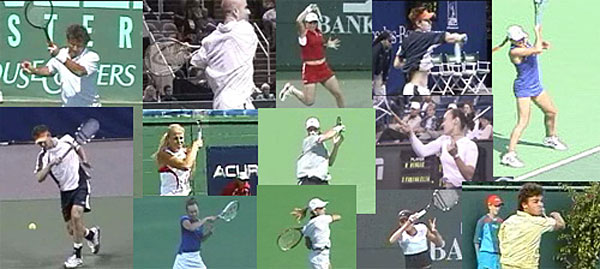
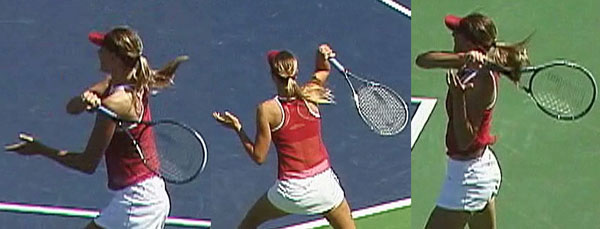
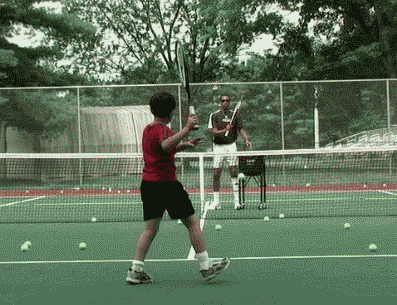
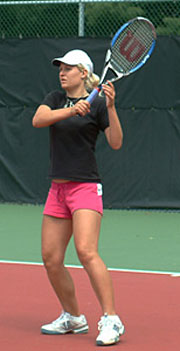
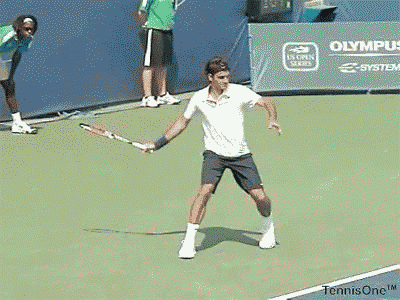
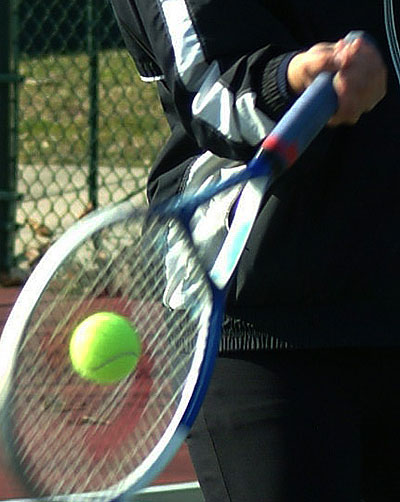
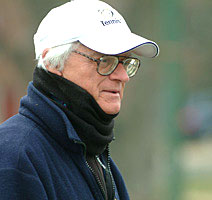 Ray Brown operates
Ray Brown operates